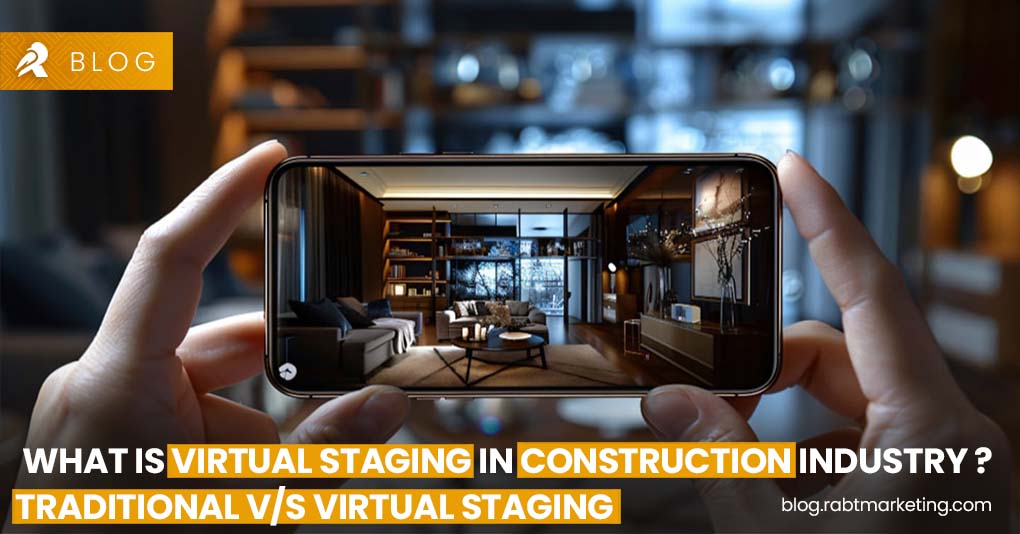In 2024, it’s the digital era of artificial intelligence, almost everything can be done online, including buying a home. Virtual Staging is a way in real estate marketing to attract customers and an advanced method as compared to traditional staging. Virtual tours have become a standard in real estate, allowing potential buyers to explore properties from the comfort of their living rooms. In fact, this cutting edge technology has emerged as a powerful tool for marketing homes. But is it really a worthy and effective technique? How does it beat against traditional staging, and what does it cost? In this blog we are going to discuss everything you need to know about virtual staging.
What is Virtual Staging?
Virtual staging is an awesome technology that involves digitally enhancing photos of full empty or less furnished rooms to beautify and glorify these rooms in front of customers. Before virtual staging,there was only a method of traditional staging. In traditional staging, physical furniture and decor are arranged in a home and then interested buyers are invited to visit the property. Whereas in virtual staging, they are entirely computer-generated images. They are mostly better than actual images in case of traditional staging. Professional virtual stagers use advanced software to insert realistic-looking furniture, rugs, plants, and many more decorative elements
This process not only highlights the best features of a home but also helps buyers visualize how they could use the space. It is a strong strategy of marketing as people are attracted towards stunning visuals rather than formal words only.
Benefits of Virtual Staging
Virtual staging offers several advantages, particularly in terms of cost and flexibility:
- It is a Cost-effective Method: Virtual staging is significantly cheaper than traditional staging. While traditional staging can cost thousands of dollars, virtual staging can be done for a few hundred per room.
- Flexibility in Design Choices: With virtual staging, there’s no limit to the styles and furniture that can be used. This allows sellers to appeal to various buyer demographics by showcasing multiple decor styles. As the entire process is only on a computer screen, the designers can make it more appealing keeping in mind the choices of interested buyers.
- Time Efficiency: Virtual staging can be completed in a matter of days, and much faster than traditional and physically staging a home. Hence it is not a lengthy process.
- Emotional Decision: There is a quote in the sales profession,”People Buy Emotions, Not Products.” There is a huge chance of making people emotional with the help of virtual staging. So,
Professionally staged photos help buyers imagine themselves living in the space, and can lead them to make emotional decisions.
Virtual Staging vs. Traditional Staging
| Feature | Virtual Staging | Traditional Staging |
| Definition | Digitally adding furniture and decor to property photos | Physically placing furniture and decor in a property |
| Cost | Generally less expensive | Can be costly due to furniture rentals, labor, and storage |
| Speed | Very fast turnaround | Can be time-consuming to set up and dismantle |
| Flexibility | Unlimited design options and easy changes | Limited by available furniture and decor |
| Realism | Can be highly realistic, but may not always capture the true feel of a space | Provides an authentic feel of the space |
| Environmental Impact | Eco-friendly as it doesn’t involve physical items | Can generate waste from furniture and decor transportation |
| Best for | Properties in need of significant improvement, quick turnarounds, and budget-conscious sellers | Properties in good condition that can benefit from a physical touch |
Ideal Scenarios for Virtual Staging
Virtual staging is especially beneficial for:
- Vacant Homes: It’s easier and cheaper to stage empty homes virtually than to rent and move in physical furniture.
- Homes with Outdated Furniture: Updating the look of a home without replacing actual furniture.
- Properties with Tenants: Helps in situations where owners can’t change the interior much.
However, for homes that are already beautifully furnished or in highly competitive markets, traditional staging might still be the better option.
How Virtual Staging Works
The process typically starts with high-quality photos of the empty or minimally furnished property. Virtual stagers then use software to add in furniture and decor. They produce photorealistic images of what the residential space could look like. These images are then used in online listings, marketing materials, and virtual tours to attract buyers.
Common Mistakes in Virtual Staging
While virtual staging offers many benefits, it’s important to avoid some common mistakes which can damage
- Overly Edited Photos: They can look unrealistic and disappoint buyers during in-person tours.
- Unrealistic Decor: The staging should match the style and architecture of the home.
- Lack of Transparency: Always disclose that the images are virtually staged and they are not real images of space to avoid misleading buyers.
As we have highlighted virtual staging has many benefits, it also has some limitations and challenges. It may not provide the same impact during in-person visits, and there are ethical considerations regarding the representation of the property.
Choosing the Right Virtual Staging Service
When selecting a virtual staging company, consider their portfolio, pricing, and customer reviews. Search on Google and you will find some trustable virtual staging agencies in your locality. Always Look for companies that offer a variety of design styles and have remarkable reputation in your market.
Read More:- What is Building Information Modeling BIM and How it is Shaping the Construction Industry ?
Read More:- 3D Printing Technology in Construction 2024: Types, Benefits and Uses
Final Words
Virtual staging is an innovative tool for real estate marketing agencies. It is a cost-effective faster way to market a home instead of decorating a home manually and selling it. However you may have to understand, it may not be suitable for every situation. It depends on your specific needs, budget, and market conditions that which method suits your marketing campaign the most.
FAQ’s
1. . Is virtual staging as effective as traditional staging?
Yes, virtual staging can be just as effective, especially for online listings. It is an innovative and faster method than traditional staging.
2. How long does it take to virtually stage a home?
Virtual staging can usually be completed within 24 to 48 hours, depending on the complexity and the company you choose.
3. Can I do virtual staging myself?
Yes, it is possible to do virtual staging on your own , if you learn specially designed softwares of virtual staging properly. However, it requires practice and patience

